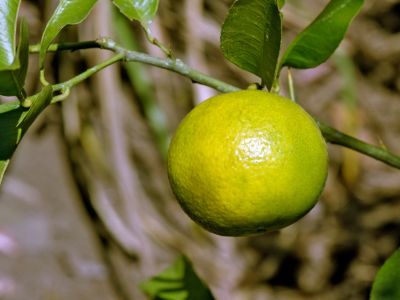Sweet Lime Varieties
The sweet lime (Citrus limettioides) has a number of names depending upon what language is being spoken. In French, sweet limes are called limettier doux. In Spanish, lima dulce. In India, mitha limbu, mitha nimbu, or mitha nebu, with “mitha” meaning sweet. Other languages have their own names for the sweet lime and just to confuse matters, there is also a sweet lemon (C. limetta), which in some circles is also called a sweet lime. Sweet limes lack the acidity of other limes and, while sweet, the lack of tartness renders them almost bland to some tastes. Whatever you call them, there are basically two types of sweet lime, Palestine and Mexican sweet limes, as well as several sweet lime varieties grown in India. The most common, Palestine (or Indian) is an oblong to nearly round fruit with a rounded bottom. The peel is greenish to orange-yellow when ripe, smooth with obvious oil glands, and thin. The interior pulp is pale yellow, segmented (10 segments), incredibly juicy, low on acid, and has a slightly bitter to bland flavor. Palestine trees are large to shrubby, thorny, and hardier than ordinary lime trees. This varietal also bears during the rainy season in India when other citruses are out of season. Columbia is another varietal, as is ‘Soh Synteng,’ a more acidic variation with slightly pinkish, young shoots and flower buds.
About Sweet Lime Tree Growing
Sweet lime trees look much like the Tahiti lime, with serrated leaves and almost wingless petioles. Unlike supermarket limes, the fruit is yellow-green to yellow-orange in color. Actually, if you let any lime ripen, it would be similar in hue, but they are picked before they are ripe to lengthen their shelf life. The fruit is most likely a hybrid between a Mexican type of lime and a sweet lemon or sweet citron. The fruit is primarily cultivated in India, northern Vietnam, Egypt, tropical America, and countries around the Mediterranean coastline. The first fruit was brought to the United States from Saharanpur, India in 1904. Here, the plant is mostly grown as an ornamental for personal use, but in India and Israel, it is used as rootstock for the sweet orange and other citrus varieties. Growing sweet lime trees is possible in USDA zones 9-10. What type of sweet lime tree care is needed for successful growing in these areas?
Care of a Sweet Lime Tree
Plant sweet limes on the south side of a building where it will get the most warmth and protection from any cold snaps. Plant sweet limes in well-draining soil since like all citrus, sweet limes hate “wet feet.” A big thing to watch for with sweet lime tree care is temperature. Sweet limes can be grown in the garden or do nicely in containers as long as the ambient temps are 50 degrees F. (10 C.) or more. Container growing is nice since the tree can be moved to shelter if inclement weather is expected. Also, hot temperatures can also affect your sweet lime. Be sure to water the tree every 7-10 days if it is in the ground and up to every day if container-grown depending upon rain and temperature factors.
